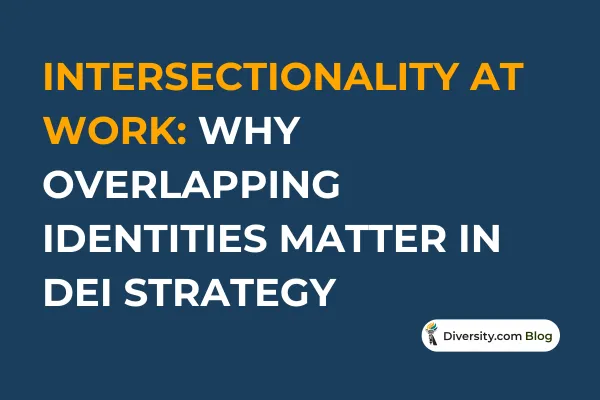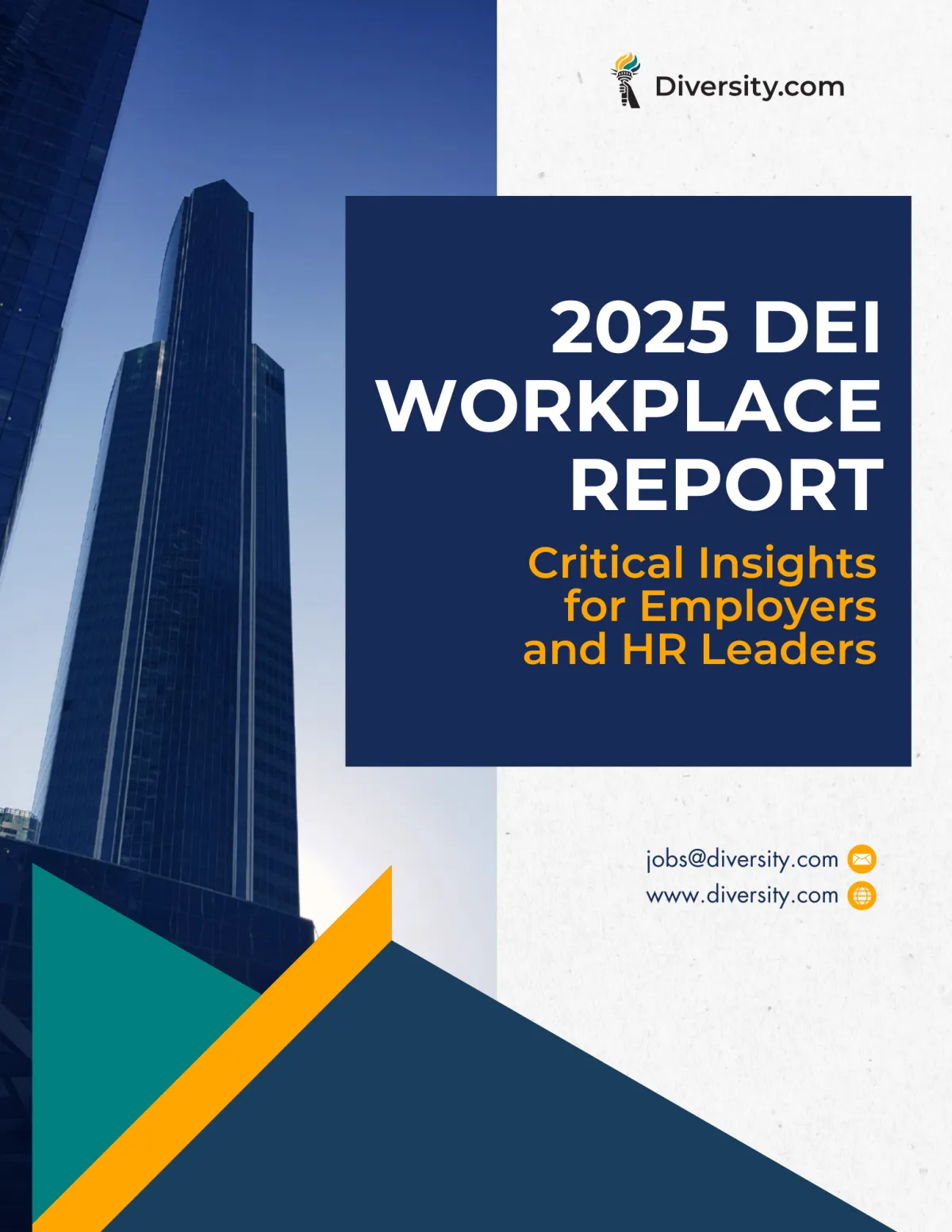
Intersectionality at Work: Why Overlapping Identities Matter in DEI Strategy
Not all bias is experienced equally. And not all DEI strategies account for that.
Diversity.com’s 2025 Workplace Discrimination Report found that employees with overlapping marginalized identities—such as race, gender, and LGBTQ+ status—are more likely to report compounded barriers at work.
These aren’t isolated issues. They’re intersectional.
To lead effectively in 2025, organizations need to stop viewing identity in silos.
What Is Intersectionality?
Coined by legal scholar Kimberlé Crenshaw, intersectionality describes how individuals with multiple marginalized identities experience overlapping forms of discrimination (Crenshaw, 1989).
For example, a Black woman may face race- and gender-based microaggressions that neither a white woman nor a Black man might encounter. The impact isn’t additive, it’s exponential.
This lens helps explain why one-size-fits-all DEI efforts often fall short.
What the Data Shows
Black women are less likely to be promoted into leadership than white women or Black men (Catalyst, 2023).
LGBTQ+ Asian professionals report higher rates of exclusion than their non-LGBTQ+ or white peers (McKinsey, 2022).
Latina professionals are more likely to feel pressure to code-switch or downplay cultural identity to be seen as “professional” (Deloitte, 2023).
These patterns highlight how overlapping identities shape risk, visibility, and psychological safety at work.
📊 In the 2025 report, employees with two or more marginalized identities were twice as likely to report retaliation or exclusion.
How to Audit Your DEI Strategy for Intersectionality
1. Disaggregate your data
Look beyond broad categories like "women" or "POC." Break down experiences by race, gender identity, age, and sexual orientation.
2. Review your policies with an intersectional lens
Does your parental leave work equally for LGBTQ+ parents? Are feedback processes safe for employees with language or cultural barriers?
3. Center intersectional voices in strategy and storytelling
In ERGs, panels, and advisory boards—prioritize those navigating layered experiences.
4. Use frameworks like Deloitte’s DEI Maturity Model
It can help organizations assess if their approach accounts for complexity, not just compliance.
The Bottom Line
When DEI efforts treat identity categories as standalone boxes, the most vulnerable voices go unheard. Intersectionality isn’t an academic concept. It's a leadership responsibility.
If we want workplace equity to be real, we need to design for complexity.
Understand how identity shapes risk and outcomes. Explore the full 2025 Workplace Discrimination Report.
Build Inclusive, Equitable, and Safer Workplaces with Diversity.com
At Diversity.com, we help employers and job seekers connect through inclusive job postings, flexible job packages, and trusted DEI resources.
Whether you're improving your company’s workplace culture or exploring roles where your voice matters, we’re here to support you.
Looking for data to guide your strategy? Choose a report below:
Download the 2025 DEI Workplace Report – Gain insights into diversity, equity, and inclusion trends across multiple industries.
Download the 2025 Workplace Discrimination Report – Explore in-depth findings on bias, exclusion, and psychological safety in today’s workplace.
For Employers & HR Professionals:
✔ Choose a DEI Job Posting Package – Connect with underrepresented talent using flexible, targeted options.
✔ Access DEI Insights & Reports — Browse practical guides, data-backed articles, and expert wisdom to strengthen your inclusive hiring.
✔ Join Our LinkedIn Community — Collaborate with HR and DEI professionals on hiring trends and best practices.
For Job Seekers:
✔ Find Diversity and Inclusion Jobs — Discover meaningful roles at companies that champion equity and representation.
✔ Create a free job seeker account — Apply confidently for jobs with companies that believe in equity.
✔ Read Our Latest DEI Articles — Stay informed with expert-backed insights on workplace inclusion, safety, and growth.
Every hire and every voice helps shape the future of work.
Get started with Diversity.com.
Have questions? Reach out to our team. We're here to support you.
Related Articles
Types of Workplace Discrimination: What Employees Report Most
Generational Bias: Why the Youngest and Oldest Workers Face the Most Discrimination
Do Employees Feel Heard? What the Data Says About Belonging in 2025
Are There Standards for DEI? What Employers Need to Know in 2025
Debunking the Myth: DEI Doesn’t Mean Lowering Hiring Standards
How to Choose the Right Job Board for Inclusive Hiring in 2025
Sources & References
Catalyst. (2023). The Double Bind for Women of Color in Corporate America. https://www.catalyst.org/research/double-bind-women-of-color/
Crenshaw, K. (1989). Demarginalizing the intersection of race and sex: A Black feminist critique of antidiscrimination doctrine. University of Chicago Legal Forum, 1989(1), 139–167. https://chicagounbound.uchicago.edu/uclf/vol1989/iss1/8/
Deloitte. (2023). DEI Maturity Model: Advancing equity through strategic frameworks. https://www2.deloitte.com/us/en/pages/about-deloitte/articles/dei-maturity-model.html
McKinsey & Company. (2022). Being LGBTQ+ at Work. https://www.mckinsey.com/featured-insights/diversity-and-inclusion/being-lgbtq-plus-in-the-workplace
Diversity.com. (2025). Workplace Discrimination Report.

